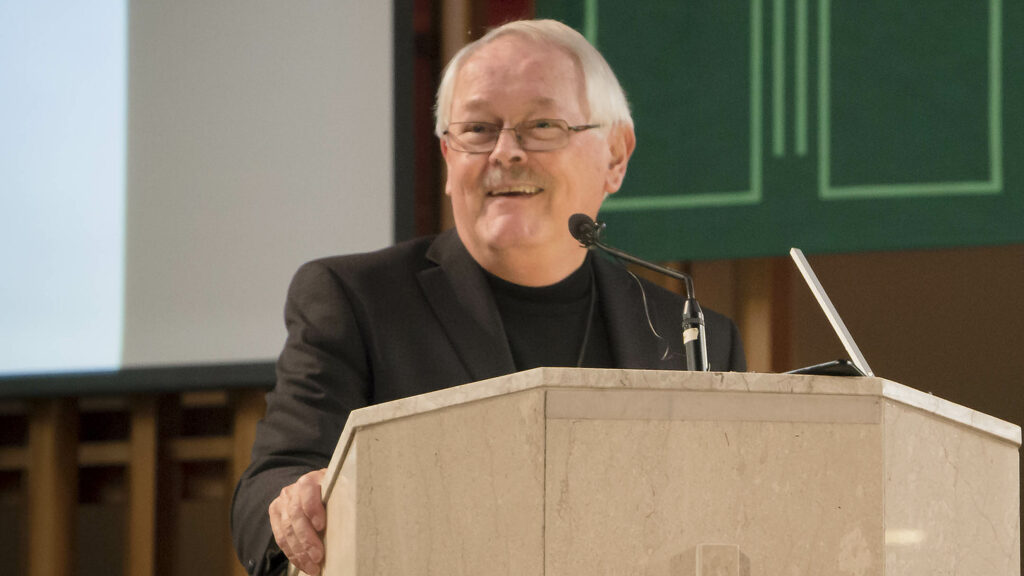It doesn’t matter whether you picture the origin of time the way science does, as beginning with the Big Bang, or whether you take the biblical account of the origins of the world literally. Either way there was a time before there was light. The universe was dark before God created light. However, eventually the world grew dark again. When?
We are told in the Gospels that as Jesus was dying on the cross, between the sixth and ninth hour, it grew dark and Jesus cried out “My God, my God, why have you forsaken me!” What really happened here?
Are the Gospels saying that it actually grew dark in the early afternoon, an eclipse of the sun, or are they referring to another kind of darkness, of a spiritual kind? Was there an eclipse of the sun as Jesus was dying? Perhaps. We don’t know, but that is of secondary importance anyway. What the Gospels are referring to is a kind of darkness that envelops us whenever what’s precious to us is humiliated, exposed as powerless, ridiculed, terminally defeated, and crucified by our world. There’s a darkness that besets us whenever the forces of love seem overpowered by the forces of hatred. The light extinguished then is the light of hope, but there is deeper darkness and this is the kind of darkness that the Gospels say formed a cloud over the world as Jesus hung dying.
What’s being insinuated here is that at Jesus’ crucifixion, creation went back to its original chaos, as it was before there was light. But, what’s also being insinuated is that God created light a second time, this time by raising Jesus from the dead, and that this new light is the most staggering light of all. Moreover, unlike the original light which was only physical, this light is a light both for the eyes and a for the soul.
For the eyes, the light of the resurrection is also a radically new physical phenomenon. At the resurrection of Jesus, the atoms of the planet were shaken up from their normal physical workings. A dead body rose from the grave to a life from which it would never again die. That had never happened before. Moreover, the resurrection of Jesus was also a radically new light for the soul, the light of hope. What is this latter light?
There’s a famous song written by Robbie Robertson made popular in the early 1970s by Joan Baez, The Night They Drove Old Dixie Down. Narrated in the first person by a man called Virgil Caine, the song is a sad lament about the distress experienced by a poor white Southern family during the American Civil War. All that could go wrong for them, seemingly had gone wrong, including the death of their young son, killed in the war. Their situation is dark, lacking any hope. At a point in the song, the narrator offers this lament about his brother’s death:
He was just eighteen, proud and brave
But a Yankee laid him in his grave
I swear by the blood below my feet
You can’t raise the Cain back up when it’s in defeat
Can life be raised back up when it’s in defeat? Can a dead body come out of its grave? Can a violated body again become whole? Can lost innocence ever be restored? Can a broken heart ever be mended? Can a crushed hope ever again lift up a soul? Doesn’t darkness extinguish all light? What hope was there for Jesus’ followers as they witnessed his humiliation and death on Good Friday? When goodness itself gets crucified, what’s the basis for any hope?
In two words, the resurrection. When darkness enveloped the earth a second time, God made light a second time, and that light, unlike the physical light created at the dawn of time, can never be extinguished. That’s the difference between the resuscitation of Lazarus and the resurrection of Jesus, between physical light and the light of the resurrection. Lazarus was restored to his self-same body from which he had to die again. Jesus was given a radically new body which would never die again.
The renowned biblical scholar Raymond E. Brown tells us that the darkness that beset the world as Jesus hung dying, would last until we believe in the resurrection. Until we believe that God has a live-giving response for all death and until we believe God will roll back the stone from any grave, no matter how deeply goodness is buried under hatred and violence, the darkness of Good Friday will continue to darken our planet.
Mohandas K. Gandhi once observed that we can see the truth of God always creating new light, simply by looking at history: “When I despair, I remember that all through history, the way of truth and love has always won. There have been murderers and tyrants, and for a time they can seem invincible. But in the end they always fall. Think of it, always.”
– Rev. Ronald Rolheiser, O.M.I., is the president of the Oblate School of Theology in San Antonio, Texas. Before taking his current position, he taught for many years at Newman Theological College in Edmonton.

